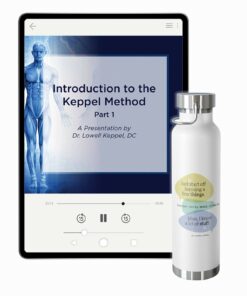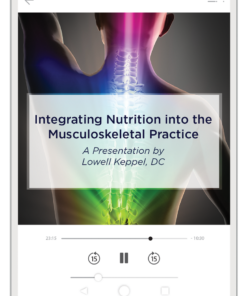Enjoy the latest installment of Dr. Lowell Keppel’s Tip of the Month series by Dr. Royal Lee for practitioners.
During the late 1950s and into the 1970s, Standard Process published the Applied Trophology newsletter. To this day, it is still an important resource full of exceptional information for the practitioner. One of my favorite recurring features in the newsletter is the “Tip of the Month” from Dr. Royal Lee.
Let’s look at what Dr. Lee shared with us in the first half of 1959.
Tip of the Month (Diverticulosis)—January 1959
“Recent tests on rats indicate that diverticulosis (intestinal) can be overcome through the use of bulk-forming foods such as fresh whole wheat products.”
Dr. Lee was a big fan of freshly ground organic whole wheat. (He even developed the Lee Household Flour Mill.) The bran provides bulk, which mechanically causes peristalsis in the bowel. The wheat germ is dense nutrition and high in vitamin E complex, which is vital for tissue repair (such as in the heart), while also providing the materials necessary for synthesis of the sex steroid hormones. Additionally, wheat germ is rich in the vitamin B complex (including the rare B4 vitamin) which causes the chemical peristalsis.
Dr. Lee discusses how whole wheat products help the bowel, which may seem counter to information being promoted today. However, we must understand that the bowel and immune problems we see now originate from the past several decades of wheat crops, which can include toxic agricultural chemicals and GMO derangements, as well as a refining process that removes the nutrients and leaves the consumer with a starch product that is sprayed with synthetic chemical vitamins. But when we start with organic whole wheat berries and mill them ourselves with the Lee Household Flour Mill, we get a wonderful, wholesome flour that provides us with the necessary enzymes (phosphatase) to assimilate the available vitamins and minerals.
If you are interested in research that supports Dr. Lee’s statement, see this article published by The Journal of Nutrition (July 2019). Following is a brief summary of the article, but it is worth the read.
From the abstract: “Wheat germ (WG) is rich in bioactive components with antioxidant and anti-inflammatory properties.” Objective: “The aim of this study was to investigate the effects of WG supplementation in modulating the gut bacterial population and local and systemic inflammatory markers of mice fed a high-fat, high-sucrose (HFS) diet.” Results: “WG reduced serum concentrations of the pro-inflammatory cytokines, interleukin (IL)-1B, IL-6, interferon-γ, and tumor necrosis factor-α (≥17%; P ≤ 0.012).” Finally, the study concludes: “WG selectively increased gut Lactobacillaceae, upregulated ileal antimicrobial peptides, and attenuated circulating pro-inflammatory cytokines of C57BL/6 mice fed a HFS diet. These changes may be vital in preventing HFS diet-induced comorbidities.”
And then there is this article published by the journal Gastroenterology (August 2013), which concludes: “In a placebo-controlled, cross-over rechallenge study, we found no evidence of specific or dose-dependent effects of gluten in patients with NCGS placed diets low in FODMAPs.”
Click here for the complete January 1959 issue of Applied Trophology.
Tip of the Month (Corns)—February 1959
“Pains due to chronic irritation such as corns disappear speedily after the administration of a few tablets of Cytotrophic Extract of Parotid [Parotid PMG]. Why? Because of activation of the detoxifying function of the thyroid, parotid, and pancreas, which are parts of the endocrine chain that cooperate to this end.”
Remember, a corn is really a callous on the foot, usually from the friction of the non-weight-bearing part of the foot. So, how did Dr. Lee come to the conclusion that Parotid PMG helps a corn? And does it help other callouses?
As Dr. Lee explains in his lecture “The Endocrine Control of Physiological Immune Reactions” (available in Lectures of Dr. Royal Lee, Vol. I) the parotid gland recycles thyroxine as the precursor di-iodotyrosine. In other words, thyroid hormone detoxifies cells. Dr. Henry Harrower also discusses this in his book Practical Endocrinology.
Click here for the complete February 1959 issue of Applied Trophology.
Tip of the Month (Toxic and Exophthalmic Goiter)—March 1959
“The symptoms of toxic goiter and exophthalmic goiter usually respond promptly (the patient rests better the first night) to the use of Vitamin A-C Complex [Cataplex A-C]. There is an immediate improvement in the cardiographic recording. The dosage should be regulated to what is required to control symptoms; it must be maintained for six to eight months before it can be reduced. The glandular enlargement and exophthalmos, if present, usually regress in this time.
“Of course, we don’t want to lose sight of the thyroxine-detoxifying effect of Anti-Pyrexin [Antronex] in this regard either.”
Ever have a goiter case that didn’t seem to respond to iodine? And then you think that those darn SP products don’t work! Well, let me tell you they do work, and they work every time. Because that is what food does. However, this particular issue is that we are not giving the proper supplement or protocol of supplements.
Cataplex A-C works on the thyroid goiters because thyroid is made of epithelial cells. “Epithelial cells compose most endocrine glands” notes Dr. Lee in the index of The Product Bulletins.
Feeding the tissues will make healthy cells, and then the thyroid cells can become a normal size. Also note that Antronex detoxifies by increasing the blood flow through the liver. For more on this issue, look at this 2007 article published by the American Journal for Clinical Nutrition.
Click here for the complete March 1959 issue of Applied Trophology.
(Note there was no Tip of the Month in the April 1959 issue.)
Tip of the Month (Aspirin in Gastric Ulcer)—May 1959
“Aspirin shown to aggravate hemorrhage in gastric ulcer (“Gastrointestinal Hemorrhage and Salicylates,” J.A.M.A., pp. 179, 643, February 7, 1959).
“It would seem the logical approach here would be to use Anti-Gastrin [Gastrex] or Comfrey Pepsin E3 [Okra Pepsin E3] as indicated, to promote healing, rather than to aggravate with antacids.”
Gastrex and Okra Pepsin E3 provide the nutrients that can help the duodenum heal. Instead of aspirin, suggest Saligesic from MediHerb—and, of course, educate the patient on other options. If they are using aspirin for pain and inflammation, you could also recommend Black Currant Seed Oil or Sesame Seed Oil from Standard Process. To thin the blood, try Tuna Omega-3 Oil.
Click here for the complete May 1959 issue of Applied Trophology.
Tip of the Month (Memory Deficits)—June 1959
“Ribonucleic Acid (RNA) tablets in large daily doses have given exceptional results in overcoming severe memory deficits and marked confusion. A starting dosage of two tablets is increased by doubling daily until a change is noted (up to sixteen tablets per day if necessary). After a favorable reaction is experienced, reduce dosage to normal.”
Ribonucleic Acid (RNA) from Standard Process increases circulation by helping move proteins out of the blood, and this in turn helps transport nutrients to tissues such as the brain. RNA is also part of a crude base for memory that helps with the synthesis of new proteins at the synapse. There is much current research on memory, and RNA is in the middle of it.
It has been reported in past years that RNA, which is a derivative of yeast, is beneficial as a tonic, nervine, diuretic, and uric acid solvent. However, the use of this product for mentally confused patients is a more recent development.
Click here for the complete June 1959 issue of Applied Trophology.
I hope that you have enjoyed this latest discussion of Dr. Lee’s Tips of the Month. Check back soon to see what Dr. Lee was writing about in the latter half of 1959. Subscribe to the Selene River Press newsletter on our homepage so you don’t miss the next post—plus updates on all of the other great blogs and resources that SRP has to offer!
Images from iStock/artisteer (main), Staras (woman rubbing her foot), PIKSEL (woman hugging other woman).






